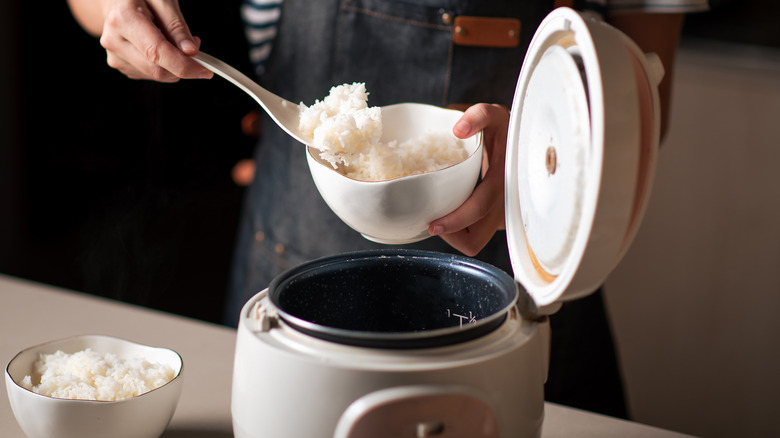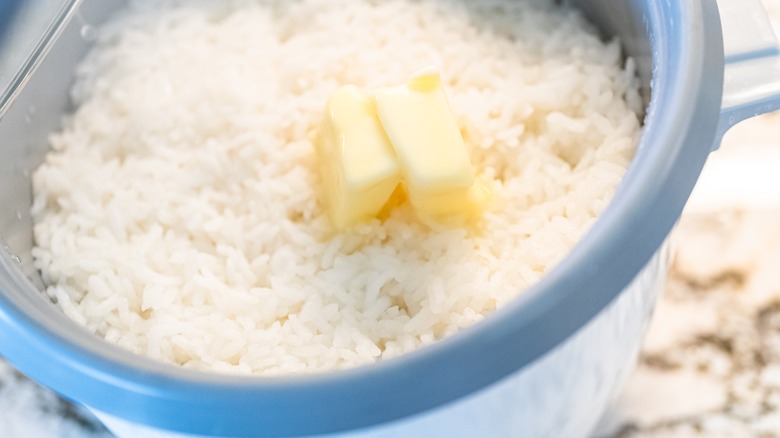Add Butter To Your Rice Cooker For Fluffy Rice Every Time
Find us a dish that isn't made better with butter and we'll be bowled over. It's the magic ingredient that enriches sauces, spruces up soups, and elevates the savoriness of a simple steak. But when it comes to making rice in a rice cooker, rubbing butter inside before adding rice and water does one more thing — it prevents the grains from sticking to the sides, resulting in tender arroz that can be fluffed up with a fork.
Butter imbues rice with a rich, salty flavor, which gives it a satisfying, rounded taste (particularly if you use a compound butter). Secondly, it fills your kitchen with an inviting, buttery aroma, and finally, the emulsifiers in the butter create a barrier on the surface of the cooker that stops the rice from catching on the base. This means every precious grain can be easily released and fluffed up gently with a rice paddle because it hasn't adhered to the sides. Greasing your rice cooker is especially useful if your appliance has lost its non-stick capabilities or has become scratched over time.
A dollop of butter added directly into the pot will melt in the water as it heats up, creating a buttery elixir for the rice to soak up. However, you can also use your fingers to spread a small knob of softened butter directly onto the base and sides of your rice cooker.
Smear the butter on the sides of the rice cooker
Be mindful to take the butter high enough up the sides, so it's level with the liquid you'll be pouring into it along with the rice. As the cooker comes to temperature and the rice cooks, the butter will heat up, helping to create that non-stick surface. If your butter isn't soft enough, melt it for a couple of seconds in the microwave and swirl it around your rice cooker. Alternatively, a fast and frugal way to add butter to your cooker is to reuse your butter wrappers. Simply glide the paper inside the pot to deposit the butter evenly on the base and sides without getting messy fingers.
If your rice sticks to the base of your pan after employing this trick, try giving the grains an extra rinse in cold water. This will remove the excess starch in the rice and prevent it from gathering at the base and producing that thin rice-paper-like film that sometimes coats the bottom. It may also help to turn the rice cooker off when the grains are cooked to stop them from drying out on the 'stay warm' function. It's unlikely your rice will burn in a rice cooker because it automatically switches to this function when it detects all the water has been absorbed into the rice — but there is a risk of it becoming claggy and dense instead of fluffy and light.

